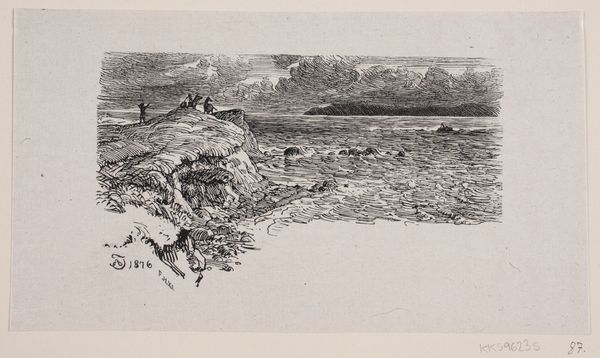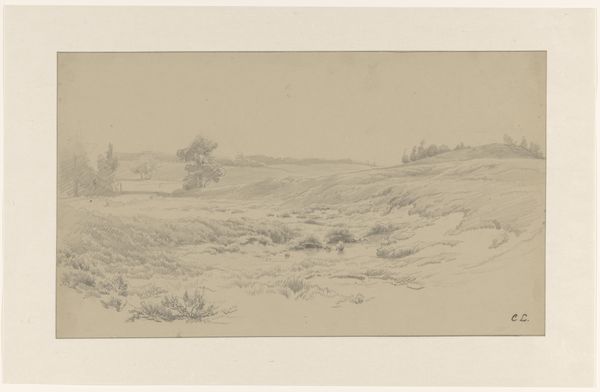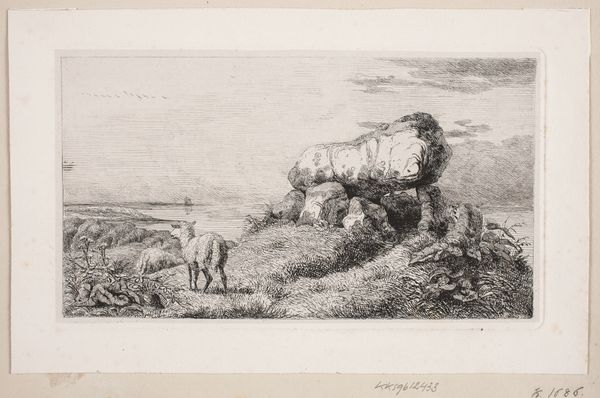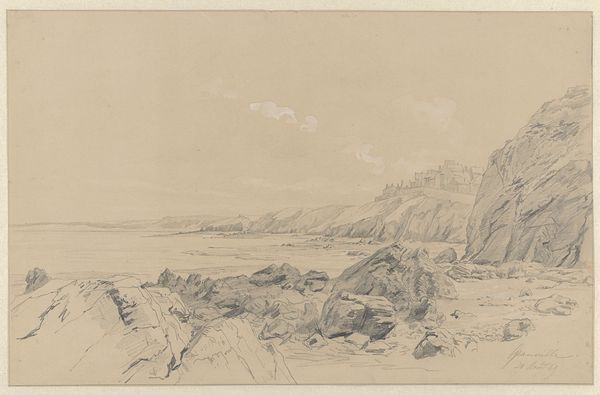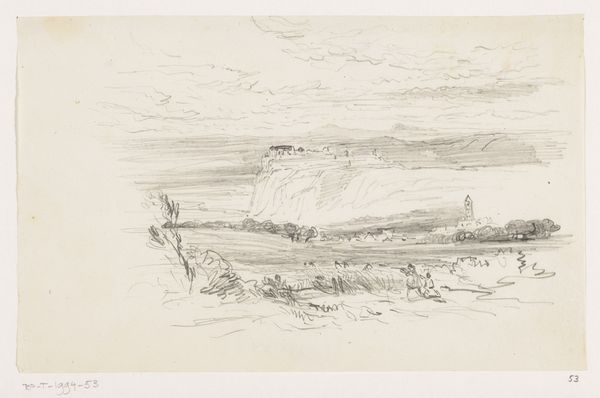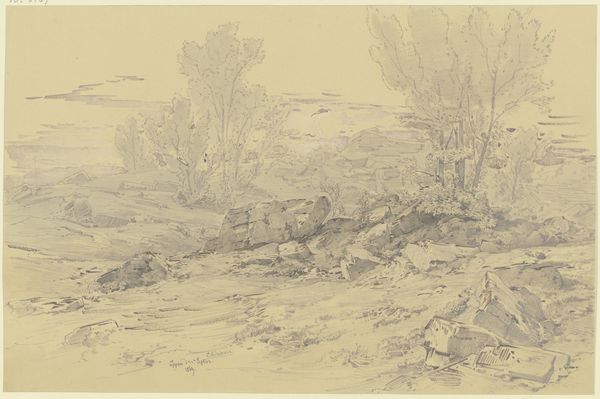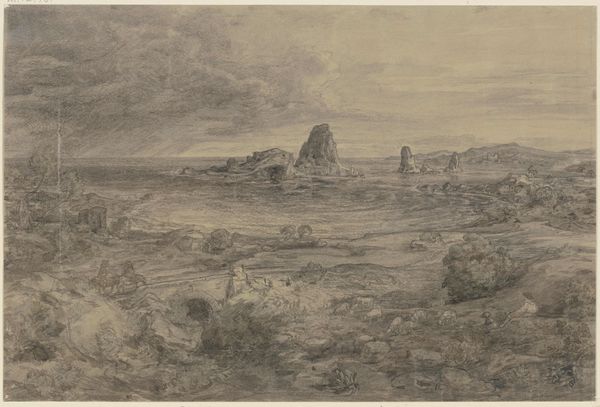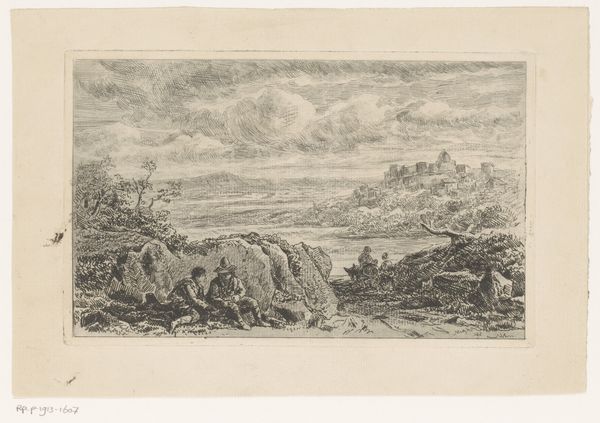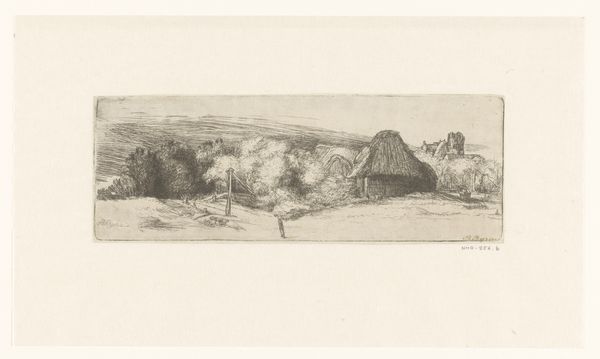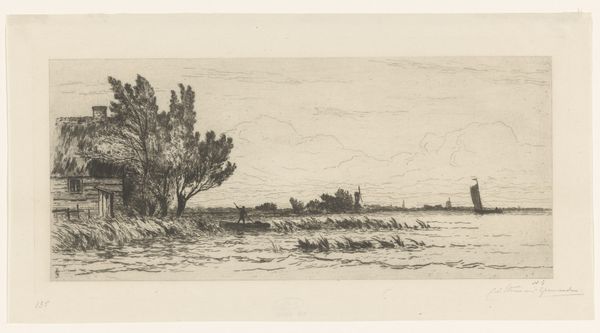
Dimensions: height 302 mm, width 507 mm
Copyright: Rijks Museum: Open Domain
Curator: This is Carel Nicolaas Storm van 's-Gravesande's "Dolmen bij Trégunc," created sometime between 1880 and 1884. The artwork is currently housed here at the Rijksmuseum. Editor: Immediately, I’m struck by the sheer weight of the rocks rendered so delicately. It's impressive how this massiveness translates through the etched line. You can almost feel the coolness radiating from the stone. Curator: Gravesande's choice of etching allows for this amazing texture – look at how the light catches on the surface of the dolmen itself. It emphasizes the geological nature of the subject, as though he's trying to convey the labor involved in its formation or construction. Editor: And what labor it must have been! Dolmens have such profound, enduring symbolic value as ancient ritual or burial sites. The stones themselves seem to embody permanence. Their stark contrast with the soft grazing cows emphasizes time's relentless march and humanity's attempts to defy it. Curator: The very placement of the dolmen becomes a site for examining class relations within artistic production. How is it valued, who gets to interpret it, who has the means to travel to these locales? The cows almost underscore an economic underpinning to the scene as well. Editor: Yes, and in seeing these megalithic structures through a 19th-century lens, one can see the burgeoning interest in pre-Christian Europe, and this romantic view of the past. Notice how Gravesande uses a monochrome palette to almost impart an antique aesthetic. He renders a feeling of time folding in on itself. Curator: An engagement with labor as much as it’s an engagement with loss. Perhaps that's what links the ancient dolmen with the then-contemporary agrarian labor happening around it. It makes you wonder how he might represent contemporary industrial efforts if presented with the task. Editor: The cows here have served as powerful symbols since ancient times, linked with nourishment and life itself, but contrasted with these death monuments, we’re left with this rich juxtaposition of transience and permanence, the ordinary and the sacred. A timeless contemplation. Curator: Exactly. Gravesande offers a window into the intricate ways our material conditions and beliefs shape one another. Editor: I find myself reflecting on the many cultural layers embodied in this scene. It’s so simple and yet so profound.
Comments
No comments
Be the first to comment and join the conversation on the ultimate creative platform.
